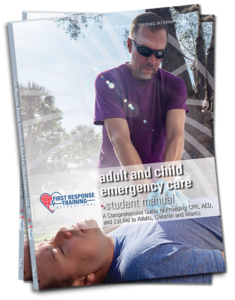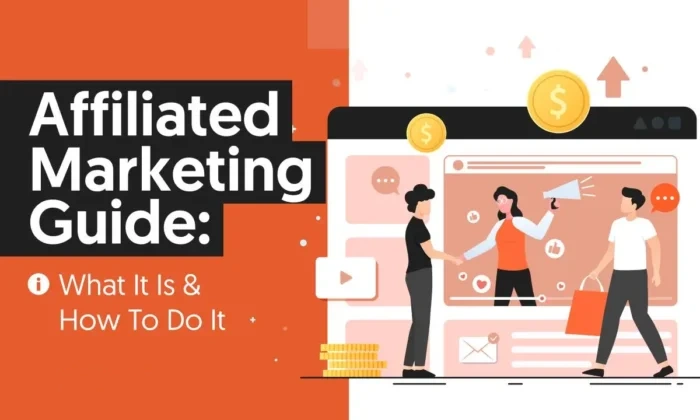Picture this: You're sipping coffee, scrolling your phone, when someone near you suddenly collapses. In that moment, your heartbeat competes with theirs. Would you freeze or lean into your hidden skills? Years ago, I never imagined I'd be the person jumping in, much less teaching my family how to use an AED at a backyard barbecue. Yet, here we are. Emergency care isn’t reserved for paramedics—it belongs to all of us.
Beyond Compliance: Why Real-World Skills Matter More Than You Think
Unexpected Heroes: When Training Meets Real Life
Picture this: an ordinary office meeting, a sudden collapse, and a colleague’s life hanging in the balance. Or a family camping trip, miles from help, when a child chokes on a marshmallow. These aren’t rare movie moments—they’re real stories from people who once thought, “I’ll never need CPR.” Until they did.
It’s strange how a few hours of emergency care training can turn someone into the calmest person in the room. The Adult, Child & Infant Emergency Care Course, for example, has quietly empowered countless individuals to step up—at work, on vacation, even in the grocery store.
Compliance That Changes Lives
OSHA standards—like 1910.151—require employers to have trained responders if there’s no medical facility nearby. It sounds like paperwork, but it’s really about making sure someone’s ready when seconds count.
ILCOR guidelines and USCG acceptance aren’t just acronyms. They mean the training is trusted, recognized, and universal. Whether someone works construction, manages a business, or leads outdoor trips, these standards ensure skills are up to par.
The thing is, workplace safety rules often spark personal growth. People sign up for compliance, but walk away with confidence—and sometimes, a story about saving a life.
From Legalese to Lifesaving
OSHA 1910.151: Employers must ensure trained staff are present if medical help isn’t close.
USCG recognition: Certification is accepted for workplace compliance in several industries.
It’s not just about checking boxes. These standards shape who’s ready to help—at work, at home, anywhere.
Busting First Aid Myths
Myth: “I’ll panic and forget everything.”
Truth: Training builds muscle memory. Most people act faster than they expect.Myth: “First aid is only for big emergencies.”
Truth: Everyday injuries—cuts, burns, allergic reactions—are just as important.
"Preparedness isn’t about expecting disaster, but about expecting to make a difference when it counts." — First Response Training International
The Adult, Child & Infant Emergency Care Course bridges the gap between compliance and real-world readiness. It’s not just a certificate—it’s a toolkit for life’s surprises.
Everyday Heroes in Disguise: Who’s Really Taking These Courses?
More Than Just Lifeguards: Meet the ‘Accidental Experts’
When people think of emergency care training, they picture lifeguards or maybe nurses. But the real story? It’s full of surprises. The course attracts a mix of people—some you’d never expect. There are teachers, office workers, outdoor hikers, and even babysitters. They don’t wear capes, but they’re ready for anything.
Who’s Signing Up—and Why?
Businesses want their teams prepared. Some even require it for staff. It’s not just about ticking a box for OSHA or ILCOR compliance. It’s about protecting people.
Teens as young as 10 (with a parent’s okay) are getting certified. For them, it’s a step toward responsibility—or maybe a summer job. It’s also a confidence boost.
Grandparents sign up, too. They want to keep grandkids safe, especially when they’re the only adult around.
The course is open to anyone 18 and up, or 10+ with parental consent. That’s a wide net. It means the classroom is filled with all kinds of people—career-minded teens, caregivers, outdoor fans, and business owners.
A Babysitter’s Story: Not in the Job Description
Sometimes, the unexpected happens. Take the story of a babysitter—just a regular weekend, nothing special. Then, a child chokes. She remembers her training, acts fast, and saves a life. Not exactly what she signed up for, but that’s the point. Emergencies don’t check job titles.
"I never thought a rainy Sunday with my nephew would end with CPR—but being prepared changed everything." — Certified participant
Certification: The Secret Superpower
Getting certified isn’t just about passing a test. It changes how people see themselves. Suddenly, they’re not just bystanders. They’re ready to step in—at home, at work, or in the park.
Confidence grows. People feel less helpless in a crisis.
Communities benefit. More trained eyes and hands mean safer neighborhoods.
Workplaces transform. Staff know what to do if something goes wrong.
It’s not an exaggeration to call it a superpower. The real heroes? They’re everywhere—and they might not even know it yet.
Emergency Preparedness Gets a Makeover: The 21st Century Course Experience
1. Blended Learning: eLearning or Old-School Manual?
Choosing between eLearning and the classic printed manual isn’t just about convenience. It’s about how each person learns best. Some thrive with interactive screens and videos, others prefer flipping real pages, jotting notes in the margins. The price tag? eLearning comes in at $27.95, while the manual is $37.08. Not a huge difference, but it matters for some.
Why does this choice matter so much? Because learning CPR, AED, and first aid isn’t just memorizing steps. It’s about confidence. If someone feels more comfortable with a book in hand, that confidence could make all the difference in an emergency.
"Education should meet you where you are—sometimes that means the laptop, sometimes the classroom floor." — Course instructor
2. Behind the Scenes: Classroom Skills Sessions
After the academic phase—whether online or manual—participants head to a local classroom. Here’s where things get real. They meet instructors face-to-face, practice chest compressions, and use training AEDs. It sounds intimidating, but most find it surprisingly supportive. Instructors want people to succeed. They walk through each step, answer questions, and even laugh when someone fumbles the bandages.
Hands-on practice builds muscle memory.
Feedback is instant—no waiting for a grade.
It’s okay to make mistakes here. Better now than in a real emergency.
3. The Journey: From Online Academics to Certification
The process is simple, but thorough:
Pick your learning style: eLearning or manual.
Finish the academic portion at your own pace.
Schedule a classroom session with a local instructor.
Demonstrate your skills—get certified.
Certification means more than a piece of paper. It means someone is ready to step up, whether at work, home, or out hiking.
4. Quick Tip: Navigating State-Specific Rules
Not every state plays by the same rules. For example, North Carolina only accepts in-person training. That means no shortcuts—participants must attend all sessions face-to-face. It’s smart to check local guidelines before signing up. No one wants to finish a course and find out it doesn’t count.
Course flexibility is key. Busy people, visual learners, hands-on doers—everyone finds a path to certification.
Life Beyond the Stereotype: What You Actually Learn (And Why It’s Surprising)
Getting Past the Hollywood CPR Scene
Most people picture dramatic movie moments when they think of emergency care. Someone collapses, a hero leaps in, and—miraculously—everything is fine after a few chest compressions. But real training? It’s a lot more practical. He or she learns actual skills for real emergencies. Not just the big stuff, either. Think: choking, bleeding, burns, and even those everyday injuries that seem minor—until they aren’t.
Balancing High-Stakes Rescue with Everyday First Aid
Paper cuts and fainting spells—not just heart attacks or car crashes.
He or she gets hands-on with everything from splinting a sprained ankle to treating a nosebleed.
Sudden cardiac arrest? That’s covered too. In fact, it’s one of the leading causes of death, and the course makes sure everyone’s ready for it.
The training isn’t just about emergencies that make the news. It’s about being prepared for the things that happen at work, at home, or on a hike. Sometimes, it’s the small stuff that matters most.
Operating an AED: No More Tech Intimidation
AEDs (Automated External Defibrillators) can look intimidating. All those buttons and wires. But after a little practice, he or she finds it’s almost second nature. The fear of “messing up” fades. Instead, there’s confidence—even if the device starts talking in a robotic voice. It’s just another tool now, not a mystery.
Unexpected Perks of Emergency Care Training
Less fear in crowds. Suddenly, large gatherings feel safer. If something happens, he or she knows what to do.
More willingness to volunteer. At work, at school, in the community—people step up more often.
Newfound appreciation for safety supplies. Bandages, gloves, even that dusty first aid kit in the office—these things matter now.
It’s not just about compliance. Graduates often say they feel truly capable. As one put it:
"The biggest surprise after training? I stopped waiting for help—I became the help." — Course graduate
He or she learns to assess emergencies, alert EMS, and respond with confidence—whether it’s for an infant, a child, or an adult. And that’s a skill set that sticks.
The Ripple Effect: How Certification Changes Communities
When someone earns an emergency care certification, the impact doesn’t stop at just one person. It’s like tossing a pebble in a pond—the ripples reach far and wide. One trained individual often sparks curiosity. Coworkers start asking questions. Family members want to know more. Sometimes, even strangers get interested after hearing a story or seeing a certification card. Suddenly, it’s not just one person prepared for emergencies. It’s a whole network.
Business Impact: More Than Just Safety
Workplaces feel the difference. Safer environments mean fewer accidents and less downtime. Morale climbs when employees know their company invests in their well-being. Fewer incidents also mean lower costs for businesses. It’s a win-win, really. And it’s not just about compliance—though meeting OSHA and ILCOR standards is critical. It’s about creating a culture where people look out for each other.
Anecdote: From Training to Community Festival
There was a school where every staff member took part in the Adult, Child & Infant Emergency Care Course. What started as a simple training initiative grew into something bigger. Parents got involved. Local businesses donated supplies. Soon, the school hosted a community safety festival. Kids learned CPR. Neighbors practiced first aid. The whole town felt more connected—and safer. That’s the kind of ripple effect certification can have.
Looking Ahead: Beyond the Job
Certification isn’t just for the workplace. Many take their skills into the community. Some volunteer at public events, ready to step in if needed. Others organize safety workshops or help local sports teams prepare for emergencies. The knowledge travels—across borders, too. First Response Training International’s programs are recognized worldwide, so skills go wherever life takes someone.
Safety isn’t a finish line, it’s a community relay—every certificate is another baton.
— First Response Training International
Emergency care training doesn’t just change individuals. It transforms businesses, schools, and entire communities. Each new certificate holder becomes a link in a growing chain of readiness. And as more people join in, the ripple effect only gets stronger. That’s real empowerment—unexpected, but lasting.



